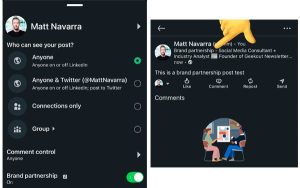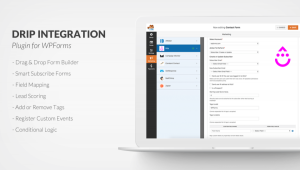
To scale, one needs a bigger budget. You might need additional funds to purchase a Customer Success Operations system to automate playbooks and avoid unnecessary manual work. You might need additional funds approved to hire additional Customer Success managers. Additional team members will help keep your CSM ratio reasonable and your team more proactive. Hiring a customer success operations manager could help your team develop templates, document your customer success playbooks and ensure efficiency when executing them. Finally, you might need additional budget to partner with a Customer Success consulting firm to accelerate the pace and guide your team in creating playbooks and templates based on best practices, train your team to ensure adoption of new strategy moves or speeding up the implementation of your Customer Success system and ensure maximum value is achieved quickly.
To get the budget, you must do some preliminary work way before you submit it. In other words, you should articulate the value that your customer success team brings to your organization in the months preceding the budget demand. Ideally, you should demonstrate the value in a way that ties with the company’s overall goals. This often means your customer success team’s impact on the company’s growth.
However, many customer success teams often struggle with communicating their value and thereby never get their budget fully approved. In return, this impedes their ability to scale. In this blog, I am going to show how other customer success executives demonstrate the value of their team to management and the board of directors. Follow these three steps to improve your chances in getting the budget you need to scale your customer success team.
Step 1: Goals
Before asking for a budget for your customer success team, you need to set clear, quantifiable goals. Your team should be aware of these goals and work towards achieving them. To demonstrate the impact of customer success, tie your goals to those defined by your executive team and board of directors. For example, if your company’s main goal is growth, identify key metrics that support achieving higher revenues. In this case, the metrics you pick should allow you to show your team’s impact on both existing revenues as well as new business.
Jeff Piper, Co-founder and Chief Customer Officer at SpringCM, demonstrates his team’s impact on new business by tracking the increase in advocacy and referrals. Your CSM team has a direct influence on overall customer satisfaction scores and number of reference-able clients. By tracking metrics that shows an increase in both, you can demonstrate your team’s indirect impact in closing more deals with new and existing clients.
Identifying your customer success team’s primary goals is important. These goals should be defined in a realistically feasible manner, or you will risk losing your credibility with your executive leadership. In other words, your quantitative goals need to be easily understandable and feel attainable to your board of directors, your executive team and customer success managers. For example, a quantitative goal that aims to increase up-sell from 5 percent to 10 percent is too hard to track. Instead, consider expressing this goal with metrics you can easily monitor and create customer success programs around. For example, “Number of clients with a closed/won expansion deal” is well defined metric your CSM team can understand and monitor.
After you’ve set up your customer success objectives and quantitative goals, it’s time to demonstrate progress to your executive team and board of directors. After a couple of quarters of successfully demonstrating value, you are ready to take on step two.
Step 2: Metrics
While your customer success objectives might be well defined, it is sometimes hard to get the budget approved without performing this step ahead of the budget request. Here’s the thing, your executive team and board of directors might have been “sold” on the idea of having a customer success team. However, it is your job to articulate the value your team brings to the table on an ongoing basis.
Leave it up to your board of directors to choose what metrics you should present, and you might find yourself merely explaining churn. Instead, take control and choose metrics that allows you to demonstrate the result of the work of your customer success team achieved, in a clear and positive way. Jeff Piper, Co-founder and Chief Customer Officer at SpringCM recommends including three key metrics in your board presentation: Referrals, Reference-ability and Retention rates (aka, the 3 R’s).
Referrals entail upsell and cross-sell opportunities your customer success team helped accomplish. Referrals can be expressed in the total number of deals, the number of accounts or AVC, ARR, and MRR. Reference-ability is the extent to which your customers are advocating for your company. It can be expressed in the number of positive online reviews or the number of reference calls made. Finally, according to Jeff, Retention Rate is the most important metric to include in your board presentation, because it directly correlates with revenue and growth. As such, Retention Rate best helps the board of directors understand the impact that the customer success team has on the company’s overall financial goals.
Step 3: Asking for additional budget
A budget is essentially a picture of how much it will cost to support your executive team in reaching your company’s objectives. If you are starting from scratch, consider using a template to calculate your budget. Your budget request should detail new and existing actions and resources needed to achieve quantitative goals.
To justify a budget request for additional hires, you should consider illustrating your team’s current and future utilization by creating a staffing model. A staffing model provides the executive team with a basis for why additional resources are required to accomplish the activities leading to achieving your annual goals. If you have never created a staffing model before, consider hiring a customer success consulting firm experienced in coaching customer success executive through this process quickly and efficiently. When completing the staffing model, you will be able to determine how many resources you need. You will also have a solid foundation to justify your request for additional budget, which will increase the probability of getting it approved.
If you find the budget process a bit daunting, don’t worry, you are not alone. To make this process easier and more efficient, you should consider teaming up with at least one other team. In fact, experienced customer success executives do not even start their budget process without talking to their accounting team first. For example, your accounting team can calculate the “total burden rate” for an average member of your customer success team.
Finally, you should also consider creating an estimate of all your customer success related activities and playbooks. Consider reviewing your customer success efforts with your executive team by comparing required effort versus actual effort. This review will give your executive team a better understanding of why the additional budget is needed.
Summary
To get the budget for scaling customer success, you must be able to articulate the value that customer success brings your organization and tie it with the company’s overall strategy. For example, if your organization’s primary objective is revenue growth, show how you plan to use the new budget to promote advocacy and referrals, which will result in new business. Most importantly, make sure your customer success goals are clearly defined and attainable.
Demonstrate how you achieve these goals by choosing metrics that will illustrate the value of your customer success team to your management and board of directors. Consider showing how you reached your quantitative goals over time before asking for an additional budget.
When asking for a budget, you need to set up one that clearly reflects how the requested funds will be used. We recommend using a staffing model and utilizing other teams in your organization to get accurate numbers that would help support your requested budget.
Business & Finance Articles on Business 2 Community(66)
Report Post







